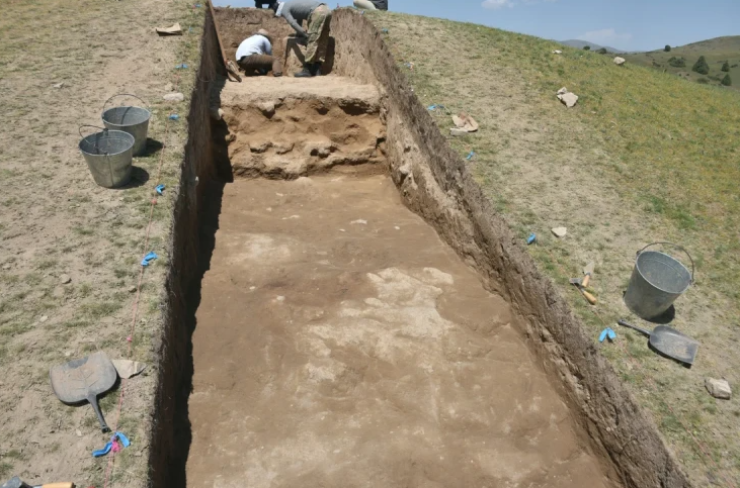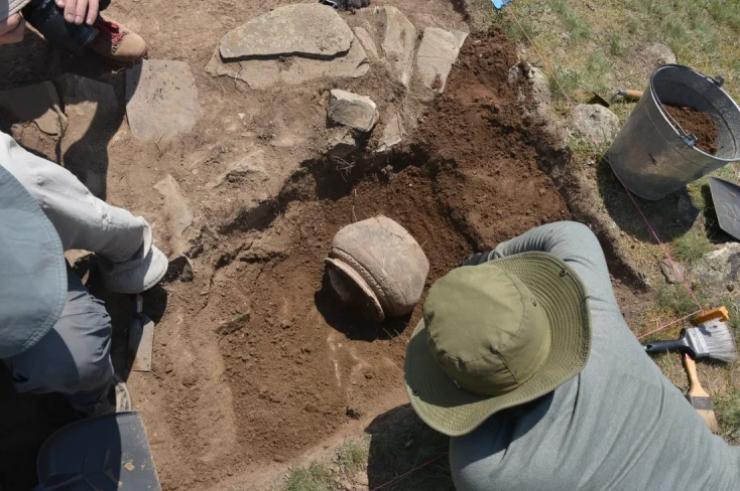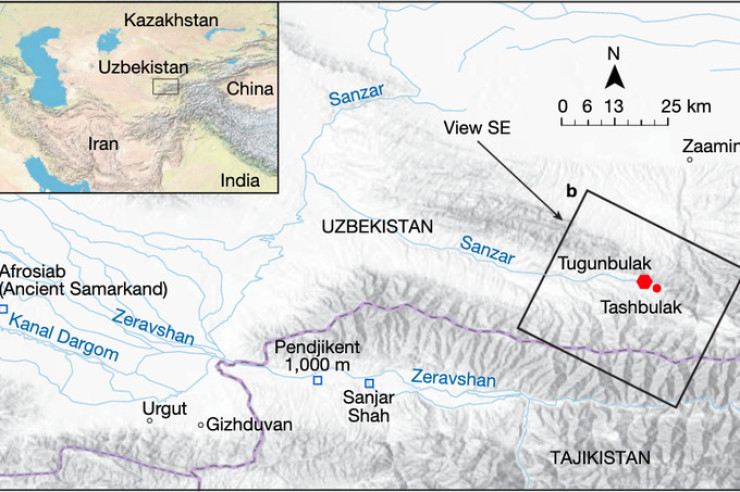Tengrinews.kz - A team of researchers has discovered the remnants of two medieval cities in the mountains of southeastern Uzbekistan, where the Silk Road once passed, according to Gazeta.uz.
The scientists found that the cities of Tugunbulak and Tashbulak were located at an altitude of over 2,000 meters above sea level. Today, less than three percent of the planet's population lives at such high altitudes or higher, primarily on the Tibetan Plateau and in the Andes.
The smaller city of Tashbulak was first discovered in 2011 when researchers noticed a plateau with unusual mounds and thousands of pottery shards. In 2015, during excavations, a local forestry inspector reported that similar pottery was also found in his backyard.
 Excavations of Tugunbulak. Photo: Michael Frachetti
Excavations of Tugunbulak. Photo: Michael Frachetti
"We got down there and right in his backyard is a medieval citadel. He just didn’t know it. We go up to the mound and we look out, and we can see mounds and pyramidical (shapes) all over the place, and we’re like, oh my gosh, this place is huge," said anthropologist Michael Frachetti from Washington University in St. Louis.
Thus, the researchers discovered a second, larger city—Tugunbulak. In 2022, the researchers mapped both cities using a drone.
Analysis showed that Tugunbulak covered an area of approximately 120 hectares and had over 300 structures, including a central fortress and five watchtowers. Meanwhile, Tashbulak spanned 12 to 15 hectares and also contained a citadel. Despite its smaller size, researchers found at least 98 visible dwellings similar in shape and size to those in Tugunbulak.
The researchers believe that Tashbulak was inhabited between the 6th and 11th centuries, while Tugunbulak was occupied from the 8th to the 11th century.
 Excavations of Tugunbulak. Photo: Michael Frachetti
Excavations of Tugunbulak. Photo: Michael Frachetti
Scientists think that despite the harsh weather conditions, Tugunbulak and Tashbulak thrived and were built for the extraction of iron ore found in the region. Archaeologists have uncovered remnants of a smelting furnace, confirming this.
However, these high-altitude cities were not solely mining settlements, as evidenced by the remains of women, the elderly, and infants found in a cemetery in Tashbulak. The reasons for the abandonment of the cities remain unknown, and researchers hope to uncover more through further excavations.

The discovery, made possible by new drone-based lidar technology, challenges long-held assumptions about urban life in the remote mountains of Central Asia more than a thousand years ago, writes National Geographic.

